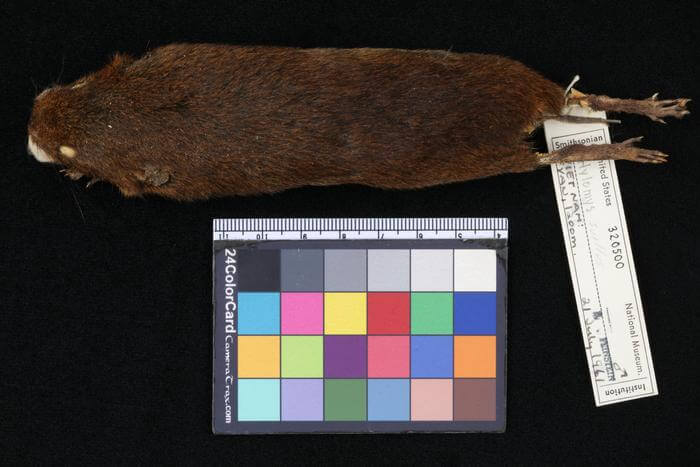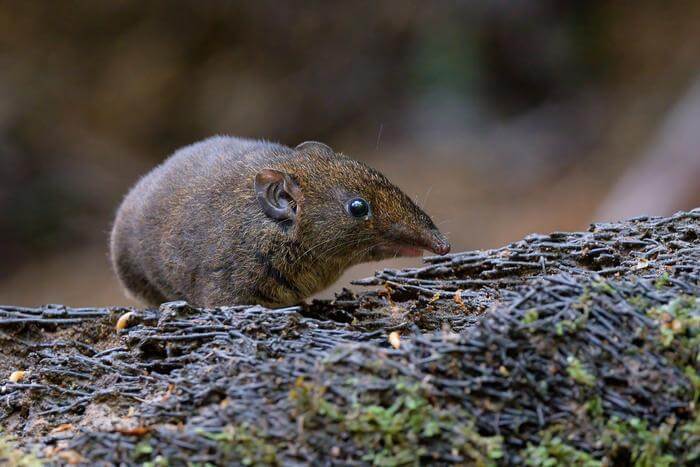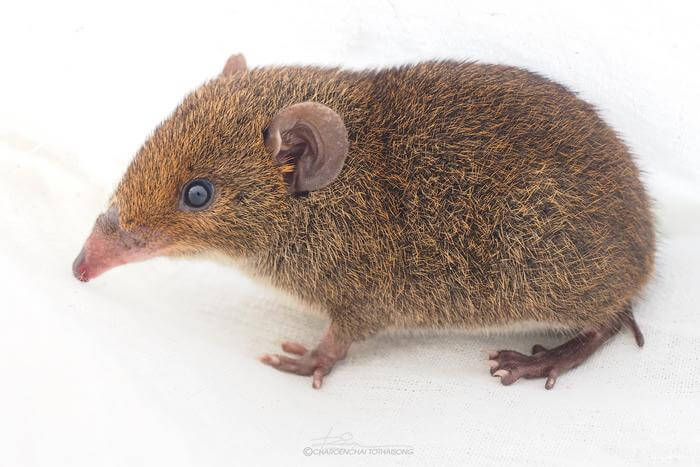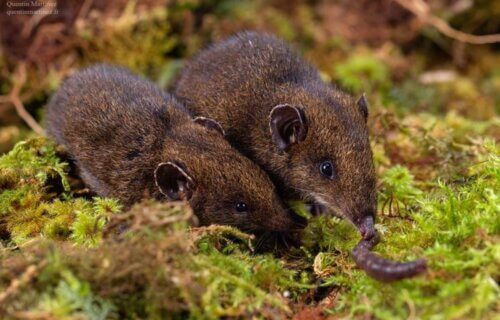WASHINGTON — Five new species of soft-furred, spineless hedgehogs have been discovered. Researchers identified two completely new species in Southeast Asia and elevated three subspecies to full species status. These hedgehogs, known for their fur rather than spikes, were previously classified under the Hylomys group. However, DNA analysis revealed distinct genetic lineages, leading to their reclassification based on physical traits examined in museum specimens.
This study, conducted by a team at the Smithsonian’s National Museum of Natural History, was spearheaded by lead author Dr. Arlo Hinckley. He emphasizes that, even in well-researched groups like mammals, new discoveries are still possible.
The Hylomys vorax, one of the newly identified species, inhabits the tropical rainforest on Mount Leuser’s slopes in Northern Sumatra. These hedgehogs are about 12 centimeters long, with dark brown fur, very narrow snouts, and entirely black tails.
Another new species, the H. macarong, found in South Vietnam’s tropical rainforests, is named after the Vietnamese word for “vampire” (Ma cà rồng) due to the males’ long, fang-like incisors. Larger than Hylomys vorax, they measure approximately 14 centimeters and also have dark brown fur. The significance of their fangs requires further study.

The other three species, previously considered subspecies of Hylomys suillus, are now recognized as separate species: H. dorsalis, H. Maxi, and H. peguensis. H. dorsalis are found in Northern Borneo’s mountains, while H. maxi resides in the mountains of Sumatra and the Malay Peninsula. Both species are around 14cm long, but H. dorsalis features a distinct dark stripe extending from the head to mid-body. The smaller H. peguensis, around 13 centimeters long with slightly yellower fur, is native to several Southeast Asian countries, including Thailand, Laos, and Myanmar.
All five species are diurnal and nocturnal omnivores, likely consuming insects, other invertebrates, and fruits as available.
“Based on the lifestyles of their close relatives and field observations, these hedgehogs likely nest in hollows and take cover while foraging among tree roots, fallen logs, rocks, grassy areas, undergrowth and leaf litter,” Hinckley says in a media release. “But, because they’re so understudied, we are limited to speculate about the details of their natural history.”
Dr. Hinckley carried out his research on various species of soft-furred hedgehogs by examining specimen collections from the National Museum of Natural History, as well as numerous natural history collections across Asia, Europe, and the United States. Working alongside collaborators, including the museum’s curator of animals, Melissa Hawkins, Dr. Hinckley compiled a comprehensive collection of 232 physical specimens and 85 tissue samples from the Hylomys group.

The research team conducted genetic analyses on these specimens and undertook detailed physical examinations, focusing on differences in fur, teeth, and the size and shape of skulls. Their findings revealed seven distinct genetic lineages within the Hylomys group, leading to an increase in the recognized species count by five.
Dr. Hinckley emphasized the crucial role of museum specimens in identifying and establishing these new hedgehog species.
“We were only able to identify these new hedgehogs thanks to museum staff that curated these specimens across countless decades and their original field collectors,” Hinckley explains. “By applying modern genomic techniques like we did many years after these hedgehogs were first collected, the next generation will be able to identify even more new species.”
“It might be surprising for people to hear that there are still undiscovered mammals out there,” Hawkins says. “But there is a lot we don’t know—especially the smaller nocturnal animals that can be difficult to tell apart from one another.”

This study shows what is possible when modern techniques such as DNA analysis are applied to museum collections. Describing new species expands humanity’s scientific understanding of the natural world and can be a tool for boosting conservation in threatened habitats, such as the Leuser ecoystem in Northern Sumatra.
“This kind of study can help governments and organizations make hard choices about where to prioritize conservation funding to maximize biodiversity,” Hinckley concludes.
This research was supported by the Smithsonian, Spain’s Ministry of Economy and Competitiveness, as well as the country’s Ministry of Universities, the European Union, and Harvard University.
The findings are published in the Zoological Journal of the Linnean Society.
You might also be interested in:
- Our sense of order helps separate humans from other mammals
- Our growing world in 2022: Here are some of the 146 spectacular new species discovered last year
- 3 roommates were bored during lockdown — They discovered over 1,000 species in their backyard!
South West News Service writer Imogen Howse contributed to this report.

